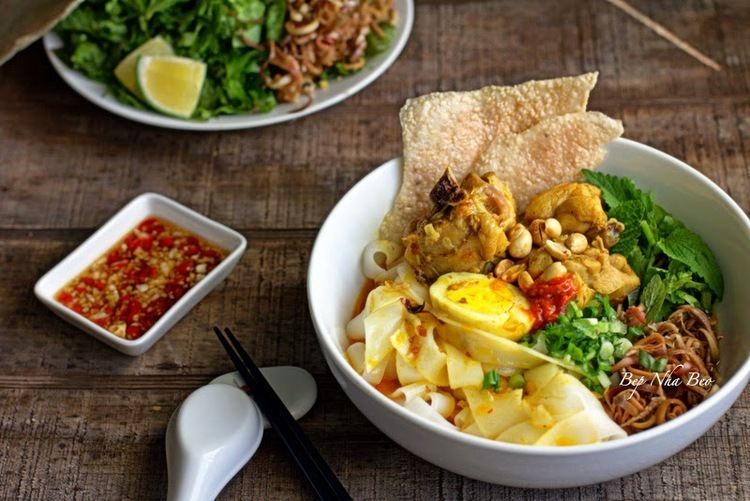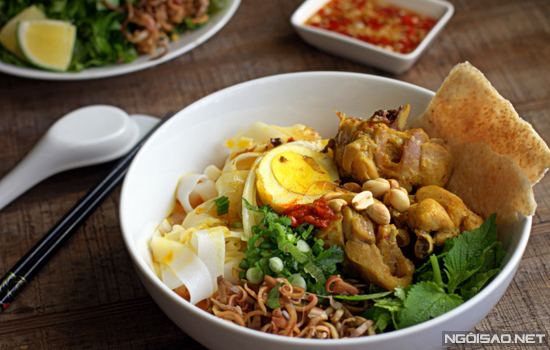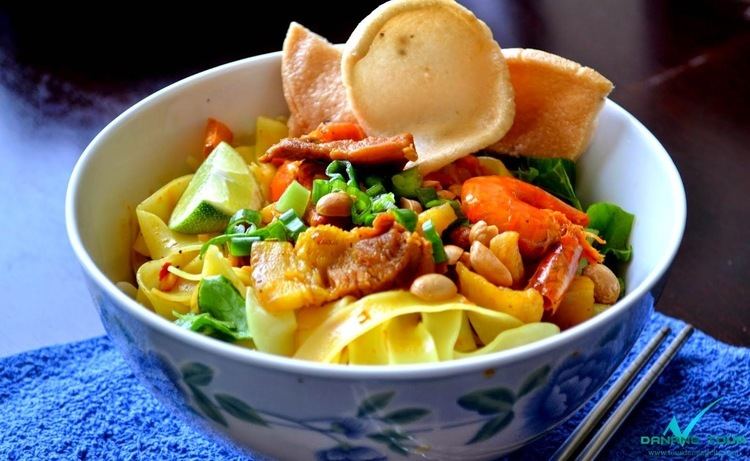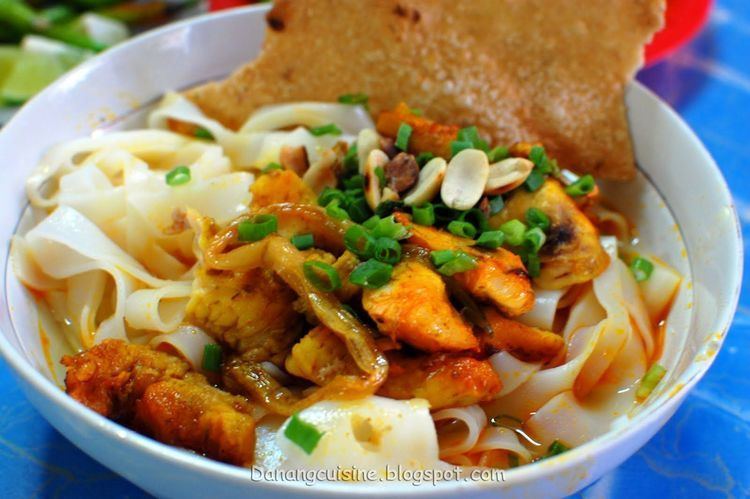Similar Cao lầu, Bún bò Huế, Bánh tráng, Bánh canh, Bún mắm | ||
Mì Quảng (also spelled mỳ Quảng), (literally: Quảng style noodle) is a Vietnamese noodle dish that originated from Quảng Nam Province in central Vietnam. In the region, it is one of the most popular and nationally recognized food item, and served on various occasions such as at family parties, death anniversaries, and Tết. Mì Quảng can also be found in many restaurants around the country, and is a popular lunch item.
Contents

M qu ng g xu n h ng
Ingredients

The dish is made with a particular type of wide rice noodle that sometimes include turmeric giving it a yellowish color. The proteins in this dish are usually shrimp, pork, chicken, or even fish and beef. The broth is made by simmering the meat in water or bone broth for a more intense flavor, seasoned with fish sauce, black pepper, shallot and garlic. Extras include hard-boiled egg, crushed peanuts, chả (Vietnamese steamed pork sausage), chili pepper or chilli sauce, fresh vegetables including: water mint (rau húng lủi), basil, Ipomoea aquatica, Vietnamese coriander, sliced banana flower (bắp chuối bào), and lettuce, and pieces of toasted sesame rice crackers called bánh tráng me. Ingredients may vary, but peanuts and bánh tráng are most commonly found in Mì Quảng and make the dish unique amongst other noodle dishes.
Serving
The main ingredients of the dish are noodles, meat and vegetables. Vegetables are placed atop of a bed of rice noodles in a bowl, then topped with pork, shrimp and finally luke warm broth and meat are added. The broth is usually strongly flavored and only a small amount of it is used to wet the noodles and maybe a little more, creating roughly a 1–2 cm thick layer of broth at the bottom of the bowl. Further south, people might have a lighter broth but more of it, turning it into a soup, especially when the dish is cooked by southern Vietnamese. Mì Quảng is also served with toasted Vietnamese sesame rice crackers, fried shallot and various herbs common in Vietnamese cuisine such as mint, "rau ram" or laksa leaves, perilla, lettuce ... Shrimp and Pork are usually the proteins of choice because of their abundance. Less common are chicken, followed by beef or fish.
Cultural aspects
There is a Vietnamese saying about this dish:
Thương nhau múc bát chè xanh,
Làm tô mì Quảng anh xơi cho cùng.

This couplet describes a girl from Quảng Nam, a province on Vietnam's South Central Coast, who warmly invites her lover to drink a cup of tea and a bowl of mì Quảng, to show him the depth of her love for him. In her opinion, mì Quảng and tea are food and drink worthy of being served in this context.


